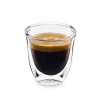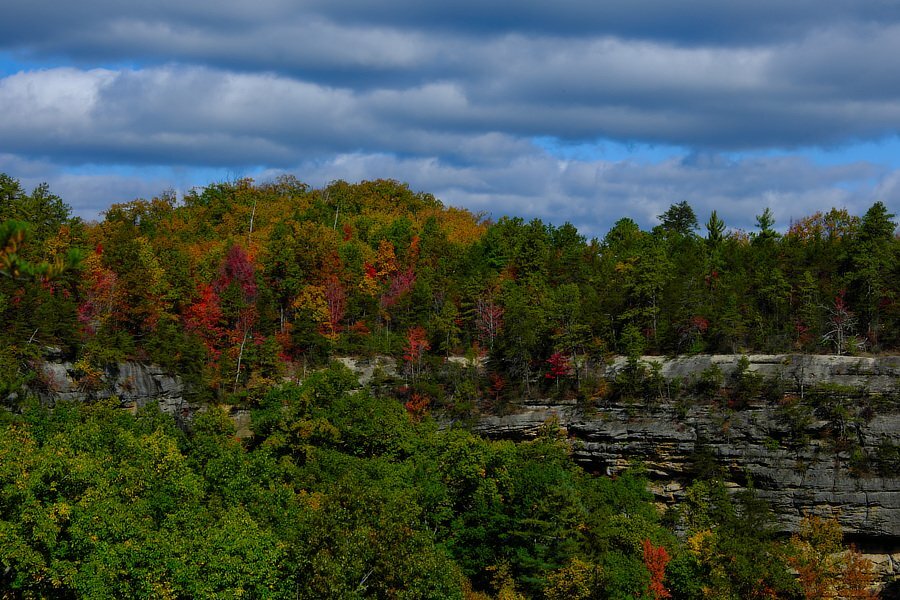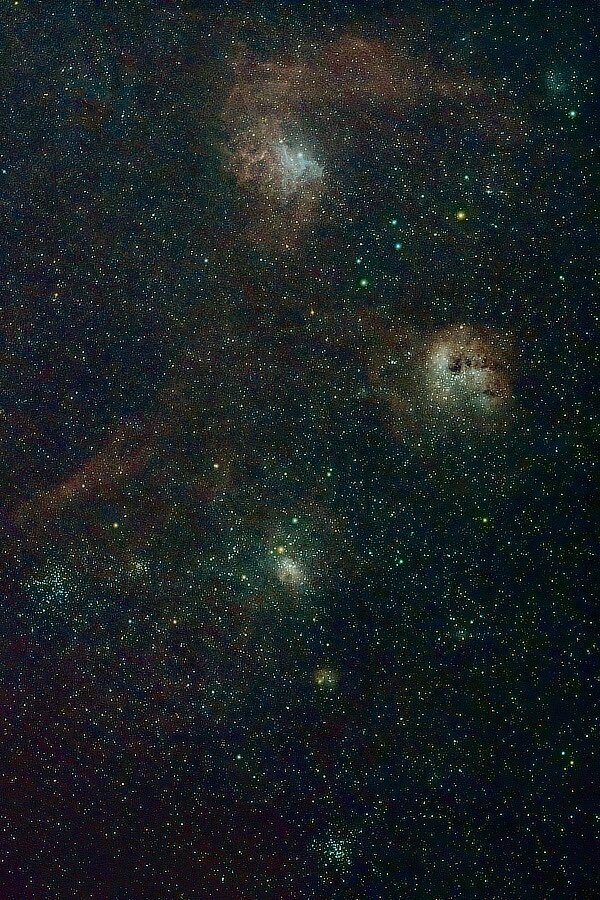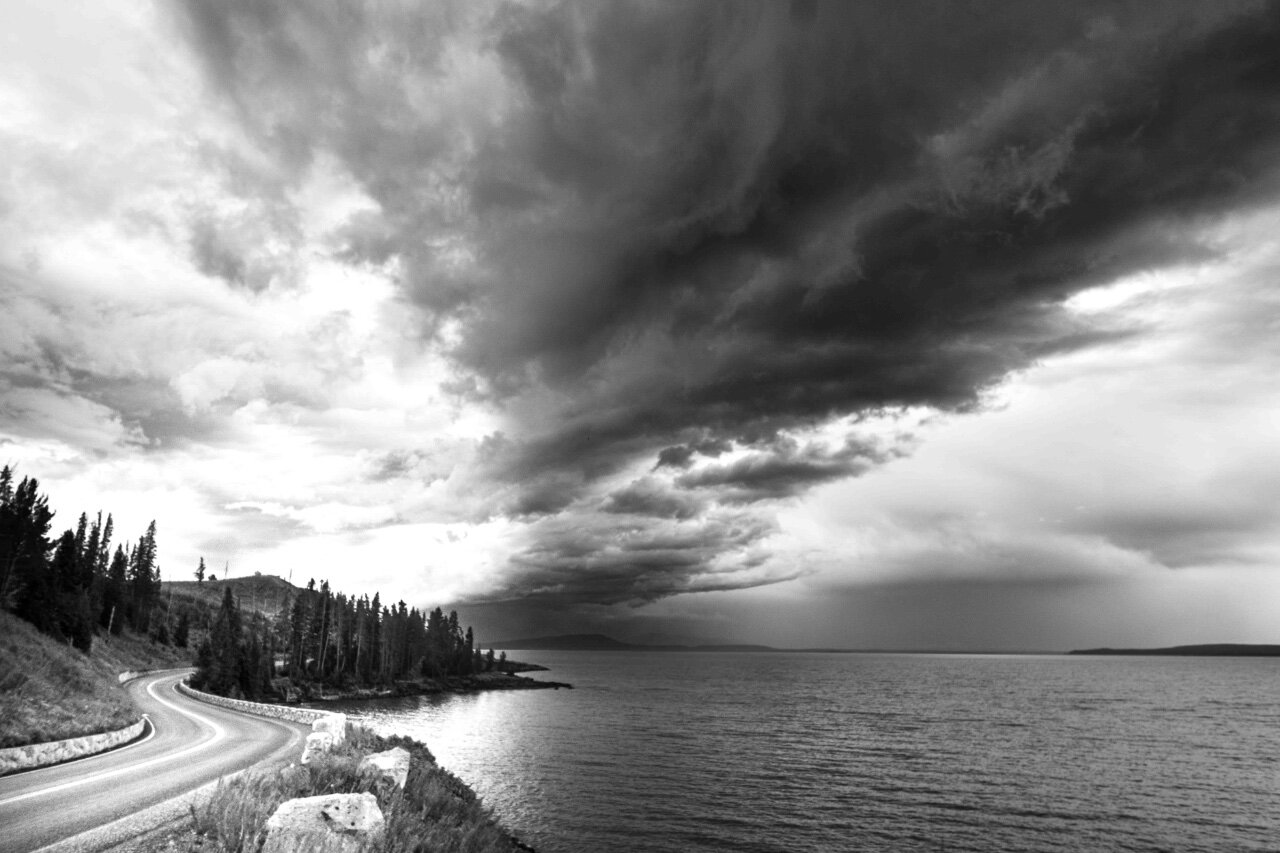Search the Community
Showing results for '문경출장샵예약(카톡: po03)『goos20.c0m』콜걸출장아가씨Y☷↴2019-01-22-15-14문경✡AIJ➚미시출장안마출장코스가격오피♣출장안마추천⇍출장오피▨문경'.
-
XT30ii+15-45 zoom+JJC bluetooth remote tripod won't zoom
ContaxRTSII posted a topic in Fuji X Lenses
Just got this JJC BT mini tripod, it controls my XH2+15-45 not just focus/shutter but also zoom function. Now I understand why Fuji designs the "annoying" powerzoom ring on the 15-45 lens. It feels very non-precise/unresponsive for a traditional zoom user since we are used to the mechanical type of zoom control. Now this combination on a remote tripod to control zoom in and out is way smoother than hand control. Reminds me of the old days of Canon camcorder zoom. However, I found out this zoom lens can only be controlled with XH2, not the XT30II. Not sure if this is by design this way or the JJC has compatibility issue with the XT30II+15-45. Wondering if anyone here have experiences/succuss if the Fujifilm made tripod can solve this problem (if so,I'm willing to spend $200 instead of the $60 by JJC). -
Hİ i use fujifilm xt-30 with xc 15-45 and its suddenly shaking right and left side when zoom in and its sound like im hitting the lens , in 15mm i got no problem but at the 45 mm its shaking how can i solve this problem? https://streamable.com/ez57js
-
In raw 20 fps make 16 picture and After a second block.... Like bufer are full 30 fps RAW make 22 picture After block. SD card are Trascend v90 3 made in Japan with rescue Lost file like Sony. Where can be the limits? With MS 8 fps make maximum 20 pictures After block If someone can esperiment and look if we are in the same boat thankyou
-
Hello!I tried to connect my RS3 Mini to Fuji X-H2S with RSS USB-C to USB-C cable. The camera is equipped with XF 16-55 or XC 15-45 lens. Both camera and lens are listed as compatible at DJI website.But when I tried to use the follow focus feature with the gimbal's dial, I've found that it's completely unusable. And the reason is following.When I try to set the focus using gimbal's dial, the focus starts changing. But when I stop moving the dial, the focus does not stop changing. Sometimes the focus does not start changing when I start moving the dial. Sometimes the focus goes into infinity instantly. Overall experience is very laggy and I cannot use the feature in real shooting.Both lens are working normally, the focus in being set properly with the lens' dial. As RS3 mini supports changing other parameters with gimbal's dial, such as ISO and aperture, I tried changing them and it works smootly. The problem is only with focus pulling. Also I've noticed that while changing the focus with gimbal's dial, the s.s., F and ISO indicators on the bottom of the camera screen, which are normally blue in fully manual mode, are blinking into white and then into blue again. So I guess there is some issue in camera firmware in part of processing the RSS input for focus parameter.The camera and the gimbal both have the latest firmware by date, which are 5.02 and 1.02.00.00 respectively.I tried operating the camera both in USB tether auto and USB tether fixed modes - the result is the same.Am I missing some settings, or I've ran into a bug?Thank you!
-
+1 to this. Something else to consider regarding write volumes - although i think it'd be minor: Shooting RAW + JPG and backing up across cards you're writing ~100mb to each card (~200mb total) for each exposure. Each raw is about 80mg and each "Fine" is around 20mb. You could try the RAW to Slot1 and JPG to Slot2 and see if you notice a difference at all. That would reduce your write volume to a max of ~80mb to slot one, and 20mb to slot 2, per exposure - a 20% reduction to the largest although I doubt it would make a noticeable difference. FWIW i do this with mine. I have 2 identical V60 cards in each slot. The buffer fills after 22 frames and then starts writing out. It doesn't take more than about 2-3 second to empty the buffer to the SD cards. I don't shoot that many frames but i was trying to figure out what the limits were and it happened at 22 frames the 2 times i tried it. The write out was much slower on an older SD card (1066x)
-
December 22, Winter Solstice Day. Winter is getting ready to make the days longer, the nights shorter and presumably both colder. Autumn was seen at a postal office trying to take care of a forwarding address issue.
-
I only have Capture One Express but I'm guessing the principle is the same with Capture One 22 - under Style you can choose different Film Simulations (including colour simulations). FireStone defaults to showing you the embedded image preview rather than converting raw - you can press the "A" key to make it convert and show you the original colours (this won't work if you have used compressed raw as it isn't supported).
-
Greetings! I found myself in my hands fuji xt30 with kit 15-45mm, when turned on, the screen glows black, the viewfinder also does not work, when the lever is moved to Off, it does not respond, only the sound (click) of shutdown passes, you have to take out the battery. I thought it was a software problem, maybe there is some way to hard reset? I updated it to the latest firmware via a USB flash drive, the update passed, I entered the firmware utility while holding back \ disp, but the problem remained. Or if the problem is in the hardware, maybe someone met too. I would be incredibly grateful for your help. Thanks.
-
"Will you walk into my parlour?" said the Spider to the Fly” * Back on page one of this thread, there is a post showing a quick exposure isolating IC 405, The Flaming Star Nebula. That section of the sky has so many things to see it is almost a tourist-oriented nature-viewing area. Some of the highlights include tadpoles, starfish, spiders, flies, pinwheels and more. This is the equivalent of just about 56 minutes of exposure. * The Spider And The Fly by Mary Botham Howitt Messier Object M36 (The Pinwheel Cluster): https://www.messier-objects.com/messier-36-pinwheel-cluster/ Messier Object M38 (The Starfish Cluster): https://www.go-astronomy.com/messier.php?Messier=M38 IC 417 (The Spider Nebula): https://www.nasa.gov/image-article/spider-nebula/ NGC 1931 (The Fly Nebula): https://waid-observatory.com/ic417-2020-01-19-HOO.html IC 410 (The Tadpoles Nebula): https://skyandtelescope.org/online-gallery/ic410-the-tadpoles-nebula-a-star-nursery/ And, of course, IC 405 (The Flaming Star Nebula): https://theskylive.com/sky/deepsky/ic405-flaming-star-nebula-object Will the spider once again coax the fly into its parlour? Will the fly escape the machinations? Their exchange is in the sky for us to ponder...
-
Hi folks. I shot a sequence yesterday using a Fuji film Acros R sim on my XT4 while having a RAF/RAW shot at the same time. Fast Raw Viewer (RV 2.0.7) sees the images as BnW in thumbnail preview yet double clicking shows it as full colour. When I open the pic in Capture One 22 I'm only getting the BnW. Same issue when I view in PIE - Picture Information Extractor - thumbnail in BnW yet double click and we are now in colour, but never in Cap.One or Firestone Image Viewer. Im completely confused - any ideas? I'd appreciate it. Thanks.
-
Thanks for your answer, and I get that, but why would the camera let us take pictures of up to 15 minutes of exposure in ES in time mode, but 1 second in bulb mode... it just doesn't make sense to me. They can perfectly set 15 minutes fixed instead of 1 second. I guess we'll have to live with that or wait for an update for them to increase the exposure time in that mode. Because as it is now, it's completely useless for me.
- 4 replies
-
- x-t5
- intervalometer
-
(and 1 more)
Tagged with:
-
Recently I noticed a few issues with my X-T3. All of the sudden and for no apparent reason, entering the firmware upgrade menu no longer works like it used to, by simply holding down DISP/BACK and turning the camera ON. Now I have to hold down DISP/BACK, switch the camera ON AND fully press the shutter a few times. Also I recently noticed the camera became REALLY SLOW in waking from sleep. It's usual behaviour is that it would wake from sleep in just a second or two when half-pressing the shutter button. Now it takes several (closer to 10-15) and several full presses on the shutter buton for it to wake from sleep. Also, the camera won't power on by simply simply ficking the ON/OFF switch. I have to press the shutter button a few times in order for it to actually turn on. Any ideas?
-
Here is the same image from above. This was an edit of one photo using Capture One. I was using the 12mm Samyang, I think my exposure was around 15 seconds. My next post was a stacked image from this session, 20 images (including this one), stacked in Sequator and edited in Capture One. The stacked image has a lot less noise, not sure if I like it better or not. I want to get some other folk's opinions/critique. What say you?
-
OK so I was all set to reject the 15-45 kit in favour of paying £250 more for the 18-55 with my new Fuji X-S20 but having read over comments received I was intrigued by the Sigma 18-50 F2.8. It looks like a super lens especially paired with the X-S20 IBIS. Would you ... 1. Get the X-S20 with the 15-45 and buy the Sigma 18-50 = £1350 + £480 = £1830. 2. Get the X-S20 with the 18-55 = £1600?
-
Good afternoon from the Netherlands. I am 67 years old and have been taking photographs since I was 12. I own an X-S10 with the XF16-80 and XF 70-300. My previous camera was an X-T100 with the XC 15-45 and XC 50-230.
-
Hi, I attempted to set up my Fujifilm as a webcam on Zoom/Teams today, but it's not being detected. Software macOS Sonoma 14.1.2 on macBook Pro 2019 Fujifilm X Webcam 2.1.0.0 Fujifilm XF 18-55mm lens X-T3 Settings Drive Dial set to "Single frame", Shutter Speed Dial set to 60, Sensitivity Dial ISO set to A (Auto) Set up > Connection Settings > Connection Mode > USB Tether Shooting Auto AF MF > Face/Eye Detection Setting > Face Detection ON > Eye AUTO AF MF > AF+MF ON Movie Setting > Movie Mode > 4K 16:9 > 29.97P > 100Mbps Steps Turn off X-T3 Connect USB-C to USB-C cable (tried multiple USB-C cables, including the two different macBook charger cables) from USB-C port on X-T3 directly into macBook Pro ports (tried all ports) Open Fujifilm X Webcam 2 Application on macBook Open Zoom/Teams on macBook and start a meeting Turn on X-T3 Zoom: Settings > Video > Camera. Only shows built in camera, no other camera/webcam options What am I doing wrong or missing here?
-
Please, Please, Please open up the shutter on the X camera (so we can shot 24fps at 1/15 or slower! It would be so fun to play with this on my new X-H2. I switch from Sony and would love this option for some shoots.
-
That is Some Bull! The Hyades and More. The Hyades Cluster are up in the Northern Hemisphere's night sky, this time of year. Their v-shape usually is easy enough to find, not just in binoculars, but by looking up in the night sky, not too far away from their sisters in the sky and mythology, the Pleiades. Greek mythology has different tales about the Hyades, one sad. one happy. Other cultures tell different tales. The v-shape seen here is called the Face of the Bull, Taurus, the big yellow-orange-red star Aldebaran is the Eye of Taurus. Aldebaran, though, is not actually part of the Hyades, it is much closer to the Earth and just visually lines up in photos. NGC 1647 is called the Pirates Moon Cluster. The LdN- listings are from (Beverly) Lynds Catalog of Dark Nebulae. The Sh2- listings are from (Stewart) Sharpless' Catalog of Emission Nebulae. The nebulae shown here, are all part of the Taurus Molecular Cloud, the star forming region - a stellar nursery, that is closest to the Earth. This is the exposure equivalent of 51 minutes, 15 seconds. Taurus: https://www.space.com/17101-taurus-constellation.html Aldebaran: https://earthsky.org/brightest-stars/aldebaran-is-taurus-bloodshot-eye/ https://earthsky.org/favorite-star-patterns/v-shaped-hyades-star-cluster-easy-to-find/ https://skyandtelescope.org/observing/happy-nights-with-the-hyades/
-
I like circular fisheyes and would love to see Fuji offer one for X mount. But until they do, the 3 available ones I know of are made by 7 Artisans, Laowa (Venus), and Meike (or Voking). I have all three (including one labeled Meike which Amazon says is no longer available, but what looks like the same lens is now available with the Voking brand). It's debatable whether I'm more of a photographer or a collector, but I do love lenses. I recently tried to compare the 3 fisheyes carefully. I think the whole point of a circular fisheye is to capture as much angle as possible, so I measured how big an angle each lens captures. I set up a blinking light at a great distance, and mounted each fisheye on my camera on a stable surveying tripod with a graduated azimuth head. The light and the lens were at the same height and the camera was leveled. I measured how big an angle I could swing each lens by, such that the blinking light was barely visible in the viewfinder. All the lenses covered more angle than they claimed, but they exceeded their claims by different margins. The claimed angles and the observed angles are ranked the same way. 7 Artisans wins this contest, but only by 4.5 degrees, while Meike trails behind by 18.5 degrees which is a way bigger difference. Here's a table of the focal lengths, aperture ranges, claimed and observed coverage angles, and the number of elements and groups in the construction. Fisheye f Aper Claimed Observed Elem Groups 7 Artisans 4 mm f/2.8-16 225 227.5 10 8 Laowa 4 mm f/2.8-16 210 223.0 7 6 Meike 6.5 mm f/2-22 190 204.5 6 5 I also took pictures with each lens at its most open and closed aperture settings. I mounted the camera on a stout tripod using an ARCA-like clamping system so I could reproduce the aim used with each lens. I shot downward toward a gravel bank, nice and contrasty, with the sun pretty nearly aligned behind the camera on axis. There were lots of tree branches against the sky around the edge of the image, and I blew up these parts of the images to compare them. These are manual focus lenses and I used focus peaking at widest aperture to assist focusing. Note that lenses like these have more depth of field than focusing range for their moderate and small apertures; that is, you officially don't have to bother focusing them, because everything is within the depth of field. All the same, I did focus them in their open aperture state. I had ISO at 250 and let the camera choose shutter speed. I used the self timer and the electronic shutter to minimize any shaking of the camera on the tripod. All the shutter speeds wound up being more than fast enough to freeze any motion in this still life. There's a huge difference between wide open and stopped down. The wide open images all lose a great deal of brightness further from the center of the picture. This is vastly improved in the pictures that are stopped down. My picture here is a slice of each, without any doctoring, moved and sized to match each other as well as I could by eye. The lens maker is noted in red on each slice. Notice you can pick out many details in the branches that are common to all photos. The Laowa does the best by far. The 7 Artisans is not as sharp, and has a great deal of lateral color aberration. The Meike is much blurrier still. Oddly, I keep finding the Meike doesn't look as saturated to me, though I have no idea how a lens can lower saturation. Also, while you have to look pretty close to find a few little edge area details that are captured by the 7 Artisans and missed by the Laowa, both of them have way better coverage than the Meike. So I'm concluding it's the Laowa I'll use most, though it's possible in some extreme situation I might use the 7 Artisans to get the widest possible angle. Don't know what I'd use the Meike for.
-
You are using the XC 15 - 45mm f3.5-5.6 lens? In spite of how frenetic stage shows get, they mostly are confined to one area in darker venues, (stadium shows excluded) pretty much the same as weddings. Likewise, lenses that are good for weddings in confined spaces work well for these events. While nowadays it might seem like one has to use f0.001 or brighter lenses, a lot of great concert images were shot using f2.4 or f1.8 lenses, many with even darker lenses. Just as in great wedding photos. Ehh, enough history. Do you know from the previous shots you have, what focal length works best for most of your shots? Over on the X-T5 sub-forum, the Xf50mm f2 is getting some good recommendations for using in weddings. A new one is going for around US-$450, used ones are easy to find, but if that focal length is too tight, then back to brighter zoom lenses. Do you like manual focus lenses? Those are usually less expensive than the auto focus ones. [This seems odd to be mentioning since you obviously have been shooting for some time.] As far as settings goes, with your current lens or your “new” one, just keep the three main ideas in mind; shutter speed, iso and f-stop. Try getting someone to stand and move for you in a darkened room and practice a little. Start with an ISO of 3200 going up to ISO 6400, f-stop wide open and various shutter speeds until you get the look you are wanting. Then do the same with the aperture. Maybe have another person standing by turning a flashlight on and off at intervals. While that may sound like just goofing off and messing around, it is similar to what you get in the venues. Trying to juggle f-stops and shutter speeds and ISO settings while the performers are bouncing around is tricky, so your camera has some settings that can help. Set your ISO to Auto with a minimum and maximum setting — you can easily get clean files up to ISO 6400 and often higher. Try to leave the f-stop for your lens open, but keep in mind if you are close to the performer, the DOF will go back to being shallow. Set shutter speeds to the minimum to freeze the scene’s motion enough to suit you — this is where the playing practice comes in handy. Then after that, it is back to the regular stuff for getting special effects and trick shots. https://fujifilm-dsc.com/en/manual/x-t100/menu_shooting/shooting_memu1/index.html#iso
-
After testing dozens of bags and backpacks from all the major brands, I can say that I have found the perfect messenger bag for my photographic equipment. It's black, discreet, doesn't look like a photography bag, is lightweight, has a rear opening and a magnetic opening and closing system, which is secure and quiet. It fits my XT4 with the Tamron 17-70mm with the lens hood on, plus the 50-140mm or 70-300 and there is still room for another lens/flash. I'm sure it's the perfect bag!!!! I'm talking about the Think Tank SpeedTop 15. https://www.thinktankphoto.com/products/speedtop-15
-
Hello everyone, I've been experiencing very slow transfer of images from my XT-3 to my MacBook Pro using Lightroom (ever since I bought my camera in 2019). Never really bothered figuring it out, but now I have more professional work it's quite frustrating. I was using my USB-C charging cable of my Mac for a long time to transfer images (obviously not a good idea). Now I bought a Mac Thunderbolt cable with high data transfer. Still nothing has changed. Besides the slow transfer, it also always starts uploading from the oldest image on my camera. Would be nice if I could change that to the most recent images first.... I often leave images of previous project on my sd for a while, so it takes about 1 hour or more before I can start importing my last project... Any Apple/Fujifilm wizards on here?
-
I love using the Acros sim to guide my RAW editing. After using 20-22 MP Canon RAW's for years, it's interesting/fun to have all the latitude in these 40MP Fuji files. Yellowstone National Park by the way.
-
The cooperation between smartphones and tablets with Fujifilm cameras of the X and GFX series has not been a glorious one so far, the comments on our forum or the reviews in the app store have never been particularly positive (to put it mildly). Fujifilm has listened the criticism and today introduces the new Fujifilm X-App. Functions, operation speed and stability have been massively improved, but most importantly, a new platform is used in the background, which makes extensions and improvements possible for the future. The new app works with all Fuji X cameras that have Bluetooth capabilities, and corresponding firmware updates are available starting today. The app itself will be available for free in the App Stores starting tomorrow (May 25, 2023), now also available for iPads. Key Improvements To The Fujifilm X-App Improved interface and operation: readability and contrast improved, easy connection with the camera. Better performance and stability Camera does not need to be put in a special mode, after the first connection everything can be controlled via smartphone. Image transfer even when still shooting with the camera Camera settings can be saved externally and transferred to other cameras of the same model Also new are the "Timeline" and "Activities" functions, which can be used to arrange images on a timeline and analyze them statistically. However, registration with the corresponding Fujifilm service is required for this. Fujifilm Launches the New App for the GFX / X Series of Digital Cameras “FUJIFILM XApp” Achieves seamless connectivity between a camera Features new function for viewing a day’s shooting activities as a photo journal TOKYO, May 24, 2023 – FUJIFILM Corporation (President and CEO, Representative Director: Teiichi Goto) announces the launch of “FUJIFILM XApp” (XApp)*1, a new app for use with the GFX / X Series of digital cameras. The app will be released for download on May 25, 2023. The XApp is a new app that connects GFX / X Series digital cameras with a smartphone or tablet device so that users can remotely control the camera and transfer images taken by the camera to the connected device for viewing. It offers an advanced level of wireless communications stability and speed, an improvement from the current “FUJIFILM Camera Remote” app (Camera Remote). The new app’s substantially enhanced usability makes it much smoother to transfer images from a camera to a smartphone / tablet device. Images are transferred along with the shooting information such as the camera and lens used and the location of the photo shoot, which can be viewed in the app. The addition of a function that presents a day’s shooting activities in the form of a photo journal further broadens the appeals of the photographic experience provided by the GFX and X Series. Fujifilm has worked on broadening the appeals of photography and boosting shooting convenience by offering the GFX / X Series, FUJINON interchangeable lenses and the Camera Remote app. In the latest move, the company has developed the new XApp, featuring enhanced functions and performance, to add greater convenience to users’ photographic experiences. Compared to the previous Camera Remote app, the XApp provides more stable and faster wireless communications, making photo transfers from a camera to a smartphone / tablet much smoother. All communication operations can be completed on a smartphone / tablet with the exception of the initial bluetooth pairing between a camera and the app. This facilitates simplified operations for enhanced shooting experience. The XApp allows users to remotely control a camera while checking the image of the camera’s rear LCD monitor on the smartphone / tablet device. Using the new “Backup/Restore” function, users can save camera settings*2 such as Shooting menu and setup configurations in the app. Saved camera settings can be sent and applied to the camera quickly and easily even during a photo shoot. The XApp’s new functions include “Timeline*3,” which displays each day’s shooting activity data, including the camera and lens used, number of frames taken and shooting locations alongside each of the transferred images in chronological order in the photo journal format. Users can edit titles and notes to create a unique photo journal with a personal touch. Another new function is “Activity*3,” which automatically aggregates and displays the cumulative number of frames taken, the number of times the Film Simulation function is used and other cumulative numbers, making it possible to reflect on past shooting activities along with corresponding photos and data. These functions advocate new ways of enjoying photography. Fujifilm will continue to develop and provide new products and services to further broaden the joy of photography with the GFX / X Series. *1 Compatible with smartphones and tablet device *2 All camera settings except for network settings and custom white balance settings *3 The Timeline function and the Activity function are not available in some countries and regions as of May 24. To view shooting information with these functions, users need to sign in with the Fujifilm account in their respective place of residence or with social media authentication (Facebook, Apple, Google). Information items to be aggregated are only those for which users have selectively given permission via the app. 1. Name App for the GFX / X Series of digital cameras, “FUJIFILM XApp” 2. Compatible models and launch date Compatible models*4 Launch date GFX Series FUJIFILM GFX100S, FUJIFILM GFX50S II May 25, 2023 X Series FUJIFILM X-H2S, FUJIFILM X-H2, FUJIFILM X-Pro3, FUJIFILM X-T5, FUJIFILM X-T4, FUJIFILM X-T3, FUJIFILM X-T30 II, FUJIFILM X-T30, FUJIFILM X-S20, FUJIFILM X-S10, FUJIFILM X-E4, FUJIFILM X100V *4 These models must be updated with the latest firmware, released on May 24, 2023, to be compatible with the FUJIFILM XApp, with the exception of FUJIFILM X-S20. 3. Supported OS iOS / iPadOS 13, 14, 15, 16 Android OS 11, 12, 13 4. Main features (1) Boosting the stability and speed of wireless communications, and simplifying operations for enhanced usability The app has been created with close attention to system design and connection procedure for wireless connectivity with cameras, smartphones and tablet devices. Images stored in a camera can be transferred to a smartphone or table device more smoothly. All communication operations can be completed on a smartphone / tablet with the exception of the initial bluetooth pairing between a camera and the app. Unifying the operations with cameras, smartphones and tablet devices and improving user convenience. The Image Transfer Order function makes it possible to transfer images in a camera to a smartphone or tablet device not only during the camera’s playback mode and when the camera is powered off, but also while taking pictures. This facilitates seamless posting and sharing of images on social media and messaging apps. The app has been updated with a high-contrast design in black and white as base tones. Text size has been increased to create a user interface with improved visibility. (2) Wireless connectivity for ease of photo shooting The XApp allows users to remotely control the GFX / X Series while checking the image of the connected camera’s rear LCD monitor on a smartphone or tablet device. It is especially useful in situations that require remote controls, such as a group shot and time lapse. Some shooting settings such as aperture, ISO and shutter speed can also be configured from the smartphone or tablet device. Using the new “Backup/Restore” function, users can save camera settings such as shooting menu and setup configurations in the app or send them to the camera. Favorite camera settings for different subject type or shooting situations can be managed in the app and exported to a camera, making it quick and easy to change settings even during shooting. Camera settings can also be reflected to multiple cameras of the same model via the app, thus streamlining multi-camera shooting. Even if camera settings are accidentally changed during camera operation, settings saved in the camera can be applied for instant recovery. Smartphone’s date, time and geolocation information*5 are automatically synched with the connected camera, so that it displays accurate time and records accurate shooting location information. *5 Users’ advance consent is required to synch geolocation information. (3) New functions facilitating reflection on shooting activities for expanding the joy of photography further The XApp features the Timeline function, which displays each day’s shooting activity data, including the camera and lens used, number of frames taken and shooting locations alongside each of the images transferred to the smartphone / tablet device, in the chronological order in the style of a photo journal. Users can edit titles and notes to create a unique photo journal with a personal touch. Maps in the Timeline function automatically reflect shooting location data, making it easy to reflect where all the photographs are taken. Another new function is “Activity,” which automatically aggregates and displays the cumulative number of frames taken, the number of times the Film Simulation function is used and other cumulative numbers. Users can look back on their shooting activities along with corresponding photos and data, further enhancing the joy of photography. The Timeline and Activity functions are useful for refining photographic techniques. (4) Firmware Update Notification function for keeping the camera always up to date The app issues a notification each time a new firmware is released for the user’s camera. Follow instructions in the notification to easily keep the camera’s firmware up to date and enjoy the latest functions straight away.
-
Hi! Currently, I have an X-T3 but since getting an X100v and using its built-in Classic Neg film sim which simulated near identical film-like emulations from the 80s and 90s, I'm contemplating on selling/trading-in of my X-T3 for an X-T30ii. Why? ***So the two main reasons why I may plunge for the X-T30ii would be: #1 Classic Negative Film Sim #2 More compact form factor NOTE: I know that you can incorporate Classic Neg on XT3 raw files either thru Capture One's or Lightroom's Fuji Color Profiles but it just doesn't render the same color palette coming from XTrans4 processors from bodies 2019 and up. ***What's holding me back in biting the bullet? Even though today I can sell the X-T3 at its price when I bought it new due to the demand: #1--My XT3 had been virtually trouble-free. Except for very rare instances that it froze (2-3x), it didn't give me problems. Version 1 X-T30's were known to have the so-called failure of the front dial command over time AND who can ever forget, that Q button position which irritated many. I also read from a Facebook group that XT30 mk1 and mk2 units may have rubber peeling issues over time. #2--XT3's weather sealing built. Even though I don't live in harsh environments, weather sealing is vital (though overrated for some) so that I wouldn't have to think about it should I travel abroad and be subjected to windy, dusty environments. Also, I don't have any clue as to what extent the XT30ii's robustness is. Maybe someone can help me here by commenting. Also, would all my lenses being weather sealed be helpful given XT30ii being non-WR? #3--Value. For certain, the X-T3 holds more value than the X-T30ii since it's a higher tier model. Performance-wise, it's also better in low light (as reviewers are claiming). Also, the resale value could be higher over time. ***I just do street, travel, food, family documentary images. ***Also, I think I can sell the X-T3 at the same price I bought it over two years ago which will cover the price of a brand new X-T30ii in case. ***Since I received my X100v, I'm finding the XT3 being used much less so "maybe" using a more compact body and having that classic neg film sim may motivate me more. ***Hoping I could get the community's thoughts on this matter as I don't want to feel regretful whatever decision I make. Thank you.
















